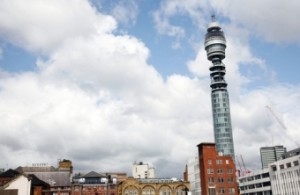Edinburgh scientists to help map UK air pollution
A research team led by the University of Edinburgh will take to planes, ships and building tops to track the progress of government emissions targets
Scientists from the University of Edinburgh will take to aircraft, ships and the top of buildings as part of a four-year research project to measure UK air pollution, it was announced on Friday (March 1).
Nitrous oxides, methane and carbon dioxide emissions from UK sources such as industry, landfill and agriculture will be mapped using satellite, aircraft, and ship.
Results of the project will be used to track progress on government targets to curb greenhouse gas emissions by 80% by 2050 as part of the 2008 Climate Change Act.
The University of Edinburgh-led team will fly across the UK in a research aircraft equipped with sensors to measure air pollution. Similar sensors on a North Sea ferry will measure gas concentrations offshore, while air samples will also be taken from towers, several storeys high, located across the UK.
Scientists undertaking the project claim that measurements from these towers in south-east England, including the BT Tower in London, will be part of the first long-term study of greenhouse gas emissions from the capital.
The movement of UK greenhouse gases will be tracked using observations from European, US and Japanese satellites. This will help improve the current understanding of how, in a global context, UK emissions to the atmosphere affect the environment, the scientists said.
Professor Paul Palmer, from the school of geosciences, said: “This will deliver robust greenhouse gas emissions estimates from the UK and the world. Such comprehensive data should help track progress towards tackling climate change.”
Partners in the project include the Universities of Bristol, Cambridge, Leeds, Leicester and Manchester. They will work alongside the Natural Environment Research Council (NERC) Centre for Ecology and Hydrology, the Met Office and the Science & Technology Facilities Council (STFC) Rutherford Appleton Laboratory. The project is funded by the NERC.
Research recently carried out by Manchester Metropolitan University (MMU) found that many species of UK wildlife are at higher risk from air pollution than previously thought (see airqualitynews.com story), while researchers from MMU and Cranfield University tested out airport ‘blast’ fences that can reduce noise and air pollution (see airqualitynews.com story).
















